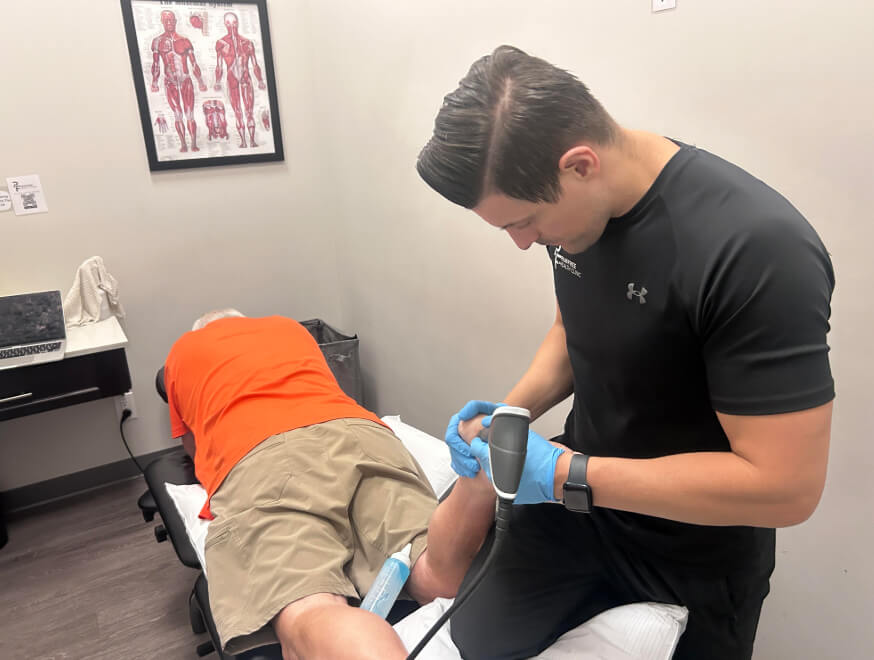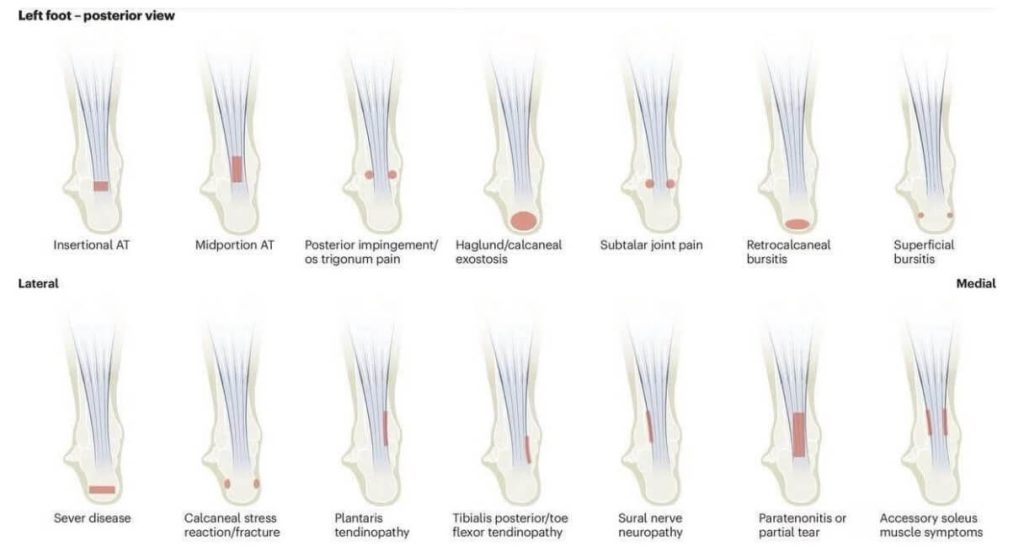Our feet are the foundation of our movement. They carry us through work, exercise, and daily activities, often without us thinking much about them. That is, until pain sets in. Foot pain can be frustrating and limiting, and it often feels like it appears out of nowhere. In reality, the source of the pain usually depends on where in the foot it is felt. By paying attention to the location, we can often identify the structures involved and begin to understand what is going wrong.

Heel pain is one of the most common complaints we see in the clinic. Many people wake up with sharp pain under their heel, which often points to plantar fasciitis, a condition where the thick band of tissue along the bottom of the foot becomes irritated. Others develop heel spurs, small bony growths that press into surrounding tissue and create a stabbing or aching discomfort. Pain at the back of the heel often signals Achilles tendinitis, especially in active individuals who put repeated stress on the tendon.
Pain in the arch of the foot tells a different story. The arch is built to absorb impact, but it can collapse or weaken over time. Flat feet and fallen arches put added stress on the tissues in this area, while overuse from running or standing for long hours can also lead to soreness. Plantar fasciitis can extend into the arch as well, creating a combination of heel and midfoot discomfort.
Some people struggle with pain in the ball of the foot, just behind the toes. This condition, known as metatarsalgia, often develops from wearing high heels or shoes with poor support, which place extra pressure on the front of the foot. In other cases, tiny stress fractures in the long bones of the foot can cause persistent pain. Morton’s neuroma, a type of nerve irritation between the toes, is another cause that can make it feel like there is a pebble stuck in the shoe.
Toe pain is also common and can take many different forms. Bunions, which appear as bony bumps at the base of the big toe, gradually push the toe out of alignment and create discomfort with every step. Gout can cause sudden, severe pain in the big toe joint, often waking patients up in the middle of the night. Ingrown toenails, while smaller in scale, can create significant swelling and pain if left untreated. Over time, arthritis may also stiffen and inflame the toe joints, making simple movements uncomfortable.
When pain develops along the side of the foot or around the ankle, tendons and ligaments are often to blame. A twisting injury may sprain the ligaments, while peroneal tendonitis affects the outer side of the foot and posterior tibial tendon dysfunction impacts the inner side. The latter condition can cause arches to collapse, creating further instability and pain.

Finally, some patients experience pain that spreads across the entire foot rather than staying in one spot. This type of generalized pain may come from nerve-related conditions such as tarsal tunnel syndrome or diabetic neuropathy. In other cases, the culprit is simpler: unsupportive footwear or repetitive overuse that leaves the foot fatigued and sore.
The key to understanding foot pain is realizing that every location tells part of the story. While self-observation can help narrow down the cause, a professional assessment is the best way to find lasting relief. At Pain Free Health Clinic, we take the time to identify the root of the problem and create personalized treatment plans, from corrective exercises to advanced care options.
If you are dealing with foot pain, do not wait for it to get worse. The sooner you address the cause, the easier it is to prevent long-term issues. Our goal is to help you move comfortably, confidently, and pain free.